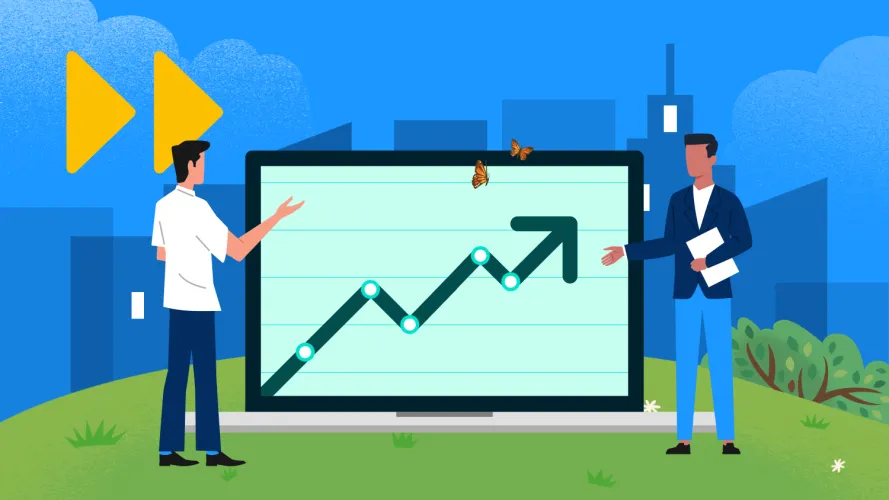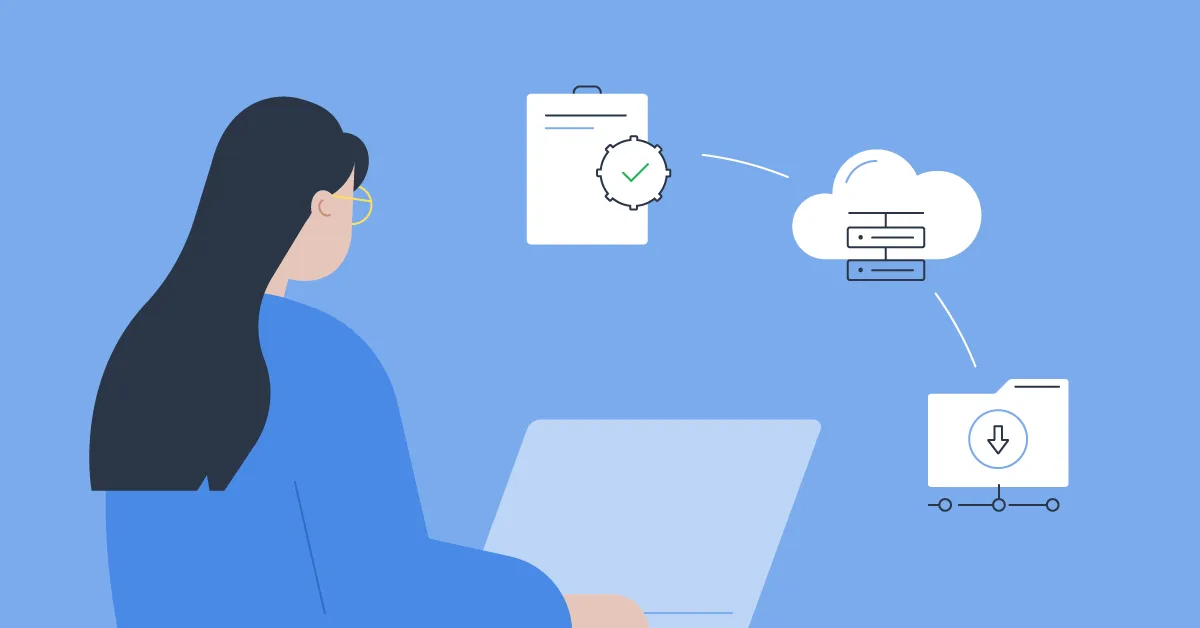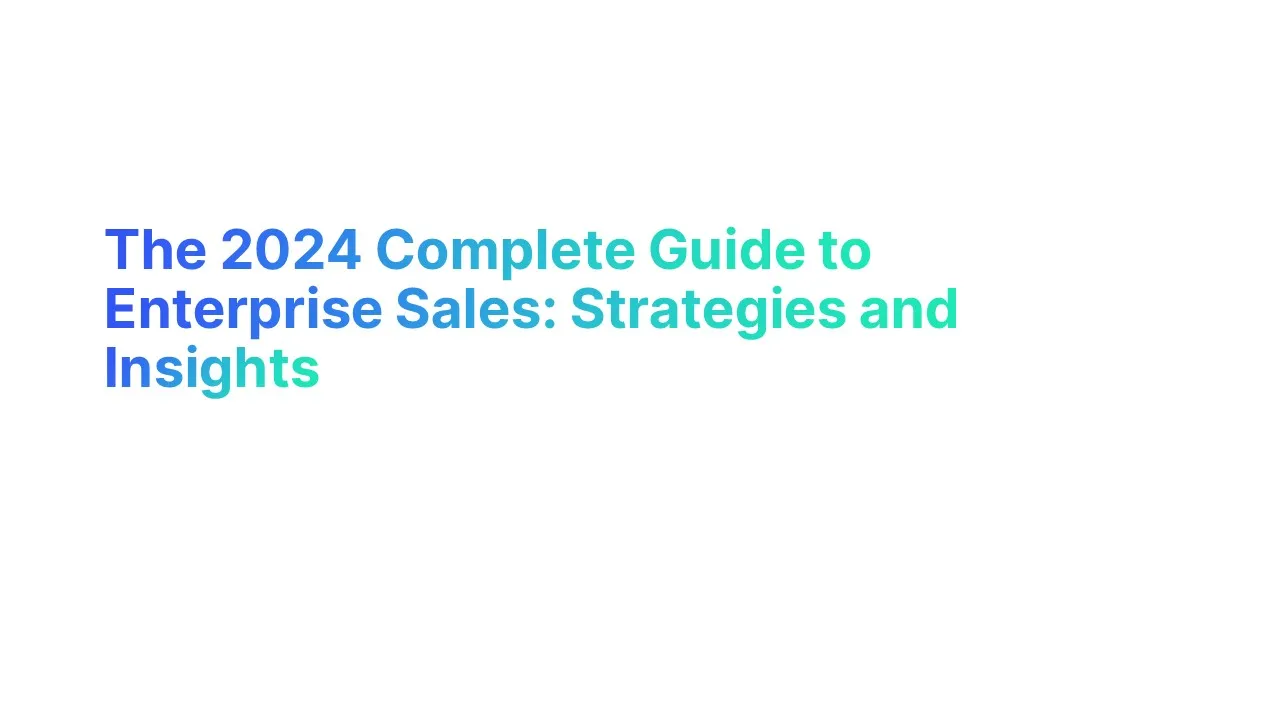Introduction to Enterprise Sales

What is Enterprise Sales? An Overview
Enterprise sales, also known as complex sales, refers to the sale of large-scale, often high-cost products or services to large organizations. Unlike transactional sales, which involve simpler, one-time purchases, enterprise sales involve lengthy sales cycles, multiple decision makers, and often require tailored solutions to meet specific organizational needs.
Examples:
- Software Enterprise Sales: Companies like SAP and Oracle specialize in providing comprehensive software solutions to manage business operations, from supply chain management to customer relationship management.
- Enterprise Tech Sales: Firms like IBM and Microsoft sell complex hardware and software systems that integrate with vast IT infrastructures to enhance enterprise efficiency and capability.
Enterprise sales typically require a strategic approach, often involving an enterprise sales team that includes account executives, sales leaders, and product specialists.
The goal is to build long-term relationships with enterprise clients, providing ongoing support and services tailored to their evolving needs.
- According to a report by Grand View Research, the global enterprise application market size was valued at USD 238.36 billion in 2020 and is expected to expand at a compound annual growth rate (CAGR) of 9.0% from 2021 to 2028.
- Salesforce, a leader in enterprise CRM solutions, reported in its 2021 fiscal results that its annual revenue hit $21.25 billion, a clear indicator of the significant demand for enterprise sales solutions in various sectors.
How Enterprise Sales Differ from SMB and Mid-Market Sales
Enterprise Sales Process: A Step-by-Step Guide

The enterprise sales process is a complex, often lengthy cycle that involves multiple stages. It is designed to handle the high stakes and multiple decision-makers typical in large business transactions. Here's an in-depth, step-by-step guide to understanding and navigating this process effectively.
Step 1: Research and Targeting
Before any sales activities begin, it's crucial to conduct detailed research. This involves identifying and segmenting potential enterprise clients based on various criteria such as industry, company size, market position, and potential needs. Sales teams leverage tools like LinkedIn, industry reports, and company databases to gather intelligence.
Key Actions:
- Identify key decision-makers within the organizations.
- Understand the business challenges and goals of these enterprises.
- Tailor your messaging to resonate with the specific needs and pain points of these targets.
Step 2: Initial Contact and Lead Generation
The initial contact is usually made through a mix of cold calls, emails, and social media engagement. The aim is to introduce your company and its offerings and gauge the potential interest of the prospect.
Key Actions:
- Develop and send personalized emails that address specific enterprise concerns.
- Use social selling techniques to engage and interact on platforms like LinkedIn.
- Attend industry conferences and networking events to build relationships.
Step 3: Qualification
This stage involves determining whether the prospect has the potential to become a customer. This is typically based on their need for your product, their budget, their authority to make purchasing decisions, and their readiness to buy.
Key Actions:
- Use BANT (Budget, Authority, Need, Timing) criteria to qualify leads.
- Conduct discovery calls or meetings to further assess the fit between the client’s needs and your solution.
Step 4: Value Proposition and Solution Development
Once a lead is qualified, the next step is to develop and present a customized solution that addresses the client’s specific business challenges. This often involves demonstrations, presentations, and detailed discussions.
Key Actions:
- Create detailed presentations that highlight how your solution aligns with the client’s objectives.
- Engage various stakeholders with tailored messages that speak to their specific interests and roles.
Step 5: Proposal and Negotiation
After presenting the solution, the next step is to submit a formal proposal. This document outlines the terms of the purchase, including pricing, timelines, deliverables, and legal terms. Negotiations often follow the proposal submission.
Key Actions:
- Develop a comprehensive proposal that includes all contractual terms.
- Be prepared to negotiate terms, often requiring several rounds of back-and-forth adjustments.
Step 6: Closing
The closing stage involves finalizing the deal, signing contracts, and initiating the onboarding process. It's crucial that this stage is handled with care to ensure all legal and commercial terms are understood and agreed upon.
Key Actions:
- Ensure all stakeholders are clear on the terms of the contract.
- Focus on creating a positive experience to pave the way for a long-term relationship.
Step 7: Onboarding and Post-Sale
After the deal is closed, the focus shifts to implementing the solution and ensuring the client is satisfied. This stage is critical for setting up future renewals and possible upselling.
Key Actions:
- Provide comprehensive training and support to facilitate smooth implementation.
- Maintain regular check-ins and offer ongoing support to address any issues.
Step 8: Review and Feedback
Finally, gathering feedback and conducting post-sale reviews are essential to understanding successes and areas for improvement. This feedback loop helps refine the sales process and improve customer satisfaction.
Key Actions:
- Conduct regular review meetings with the client to discuss performance and any adjustment needs.
- Use customer feedback to refine your product and service offerings.
10 Best Practices for Success in the Enterprise Sales Cycle

Navigating the enterprise sales cycle effectively is crucial for closing large deals and maintaining strong customer relationships. Here are 10 best practices that can significantly enhance your success in the enterprise sales cycle:
Develop In-depth Market Knowledge
Understanding the intricacies of the market you're operating in is critical for success in enterprise sales. This involves not just knowing your product and its capabilities, but also understanding the industry trends, regulatory impacts, and economic factors that influence your clients’ decisions.
- Industry Trends: Staying updated with industry trends is vital. For instance, Gartner’s research shows that 90% of businesses consider technology key in managing future disruptions. Position your solution as integral to technological adaptability.
- Competitive Analysis: Analyze competitors thoroughly to identify your unique selling proposition (USP). What do you offer that no one else does? How can you leverage this in discussions?
- Regulatory Environment: Especially in industries like healthcare and finance, regulatory changes can significantly affect product deployment. A deep understanding of these aspects can position you as a trusted advisor.
Identify the Right Stakeholders
In enterprise sales, deals are rarely closed with a single decision-maker. Identifying and engaging all relevant stakeholders is a strategic necessity.
- Decision-Making Unit (DMU): Identify the DMU in the target organization, which might include roles from executive C-levels to technical experts. For example, when selling a SaaS product, stakeholders might include IT Directors (technical approval), CFOs (budget approval), and Chief Compliance Officers (regulatory approval).
- Influence Maps: Create influence maps to understand the relationships and power dynamics within the company. This can guide you on whom to approach first and how to tailor your messaging.
- Engagement Plan: Develop a strategic plan to engage each stakeholder, utilizing personalized communications that address their specific interests and pain points.
Build Strong Relationships
Building and maintaining strong relationships is the cornerstone of successful enterprise sales. These relationships can safeguard your position with the client over the long term and facilitate smoother negotiations.
- Trust and Credibility: According to a LinkedIn study, nearly 45% of decision-makers highlight the lack of trust in a salesperson as a deal-breaker. Building trust through transparency and reliability can set you apart.
- Regular Communication: Keep stakeholders informed with regular updates about industry trends, product evolution, and how these can benefit them. Consistent communication keeps you top of mind.
- Customer-Centric Approach: Tailor your approach to each client’s needs and feedback. An Accenture survey found that 91% of consumers are more likely to shop with brands that recognize, remember, and provide relevant offers and recommendations.
Tailor Your Communication
Effective communication in enterprise sales must be tailored to match the unique context of each stakeholder involved in the buying process, ensuring that messages resonate strongly with each individual's specific needs and concerns.
- Understand Audience Needs: Before crafting your message, thoroughly understand the roles, challenges, and goals of the stakeholders within enterprise companies. For example, an IT manager may prioritize technical specifications and security features, whereas a CEO might focus on ROI and big-picture benefits.
- Language and Terminology: Use industry-specific language that aligns with the stakeholder's expertise. Avoid jargon for non-technical stakeholders to ensure clarity.
- Channel Selection: Choose the most appropriate communication channels based on the preferences of the stakeholder. Sales professionals often find that while C-level executives prefer direct emails or executive briefs, technical experts appreciate more detailed documents or webinars.
Offer Solutions, Not Products
In enterprise sales, success often hinges not on selling a product but on providing a solution that addresses a specific business challenge or opportunity relevant to enterprise customers.
- Identify Pain Points: Engage in detailed discovery sessions to unearth the enterprise customers’ pain points. A survey by HubSpot revealed that salespeople who conduct thorough needs-assessment discussions are 2.8 times more likely to close enterprise deals.
- Solution Customization: Tailor your offering to address these pain points specifically. Show how your product can be configured or adapted to meet their unique needs within an enterprise sales model.
- Value Proposition: Articulate clearly how your solution improves business processes, reduces costs, or increases efficiency for enterprise companies. Quantify these benefits wherever possible, such as projecting a 20% reduction in operational costs or a 30% improvement in efficiency.
Leverage Consultative Selling Techniques
Consultative selling is a key strategy in enterprise sales, emphasizing problem-solving and the role of the sales rep as a trusted advisor rather than just a salesperson.
- Build Knowledge Expertise: Become an expert on both your product and the industry of your client. This depth of knowledge ensures enterprise sales reps can converse confidently on how their solutions fit within the broader industry context.
- Active Listening: Engage actively in listening to fully understand the client's situation. This involves not just hearing but also interpreting and responding thoughtfully to what is said and sometimes what is unsaid.
- Long-term Focus: Focus on the long-term relationship rather than the immediate enterprise sale. This approach often leads to greater trust and more sales opportunities in the future. According to a study by the RAIN Group, 69% of buyers are willing to pay a premium for those who offer new insights and perspectives about their business.
Utilize Case Studies and Data-Driven Insights
Leveraging case studies and data-driven insights is crucial in establishing credibility and demonstrating the effectiveness of your solutions in enterprise sales.
- Highlight Success Stories: Share case studies that detail how your solutions have solved similar problems for other enterprise customers. For instance, if a previous implementation resulted in a 40% increase in operational efficiency, highlight this achievement.
- Quantitative Data: Use data to back your claims. Statistics such as cost savings, ROI, and productivity improvements are compelling and help solidify the benefits of your solution.
- Tailored Insights: Customize data insights to reflect the specific industry or operational concerns of the prospect. This shows that you understand their unique environment and challenges.
Focus on Long-term Value
In enterprise sales, the focus should always be on the long-term value your solution brings to the client, rather than just immediate gains.
- Strategic Alignment: Demonstrate how your solution aligns with the client’s long-term strategic goals. For example, if an enterprise is focusing on digital transformation, show how your solution facilitates this over the long haul.
- Cost-Benefit Analysis: Provide a detailed cost-benefit analysis that maps out the long-term benefits versus the initial investment. This helps decision-makers justify the purchase to other stakeholders.
- Sustainability and Scalability: Discuss how your solution can grow and evolve with the client’s business, emphasizing flexibility and scalability.
Negotiate Effectively
Effective negotiation is key in securing enterprise deals while maintaining a positive relationship with the client.
- Preparation: Enter negotiations with a clear understanding of your bottom line and the areas where you can be flexible.
- Win-Win Solutions: Aim for agreements that benefit both parties. Understand the client's needs and constraints and propose solutions that address these while meeting your own goals.
- Professionalism and Patience: Enterprise deals can involve lengthy negotiations. Maintain professionalism and patience throughout, demonstrating that you are a reliable and steady partner.
Invest in Post-Sale Support and Relationship Management
After closing an enterprise deal, ongoing support and effective relationship management are vital for customer satisfaction and retention.
- Comprehensive Onboarding: Ensure that the client and their team understand how to use your product effectively through detailed training sessions and onboarding processes.
- Regular Check-Ins: Schedule regular meetings to discuss any issues and gather feedback. This shows that you value the client’s input and are committed to their success.
- Responsive Support: Provide timely, helpful support for any questions or problems that arise. This helps in building trust and reassurance that the client made the right choice in selecting your solution.
What to Look for in Enterprise Sales Software

When choosing enterprise sales software, it's crucial to consider various features and capabilities that can streamline the sales process, enhance productivity, and ultimately drive revenue growth.
Below, I'll outline what to look for in enterprise sales software, followed by some recommendations for the best software solutions currently available.
What to Look for in Enterprise Sales Software
CRM Integration
- Effective enterprise sales software should seamlessly integrate with existing customer relationship management (CRM) systems to provide a unified view of customer interactions, sales pipelines, and data analytics.
Scalability
- The software must scale with your business. It should handle increased data volumes and user counts without performance degradation.
Customization
- Each enterprise has unique needs. Look for software that allows customization in workflows, user permissions, and reporting to fit specific business processes.
Data Security
- Given the sensitive nature of sales data, robust security features are essential. Ensure the software provides secure data access, storage, and compliance with relevant regulations (e.g., GDPR, HIPAA).
Advanced Analytics
- Tools that provide insightful analytics and reporting capabilities can significantly enhance decision-making. Look for features that offer detailed sales forecasting, performance metrics, and trend analysis.
Automation Capabilities
- Automation in tasks like lead scoring, email marketing, and follow-up scheduling can save time and reduce human error, increasing overall efficiency.
Mobile Accessibility
- With sales teams often on the move, mobile access to the software via apps or web interfaces is crucial for real-time updates and remote data access.
Integration with Other Tools
- The software should integrate well with other business tools such as email platforms, social media, and productivity apps to streamline various sales processes.
User-Friendly Interface
- A complex tool can hinder productivity. Look for software with an intuitive interface that minimizes the learning curve and enhances user adoption.
Support and Training
- Good vendor support and comprehensive training resources are important to help your team make the most of the software.
Best Software for Enterprise Sales
Salesforce Sales Cloud
- Pros: Highly customizable, extensive integration options, powerful analytics, and widespread industry acceptance.
- Cons: Can be complex and expensive, particularly for smaller enterprises.
Microsoft Dynamics 365 for Sales
- Pros: Excellent integration with other Microsoft products, good automation capabilities, and strong AI insights.
- Cons: Can be quite complex, requiring significant training and setup.
HubSpot Sales Hub
- Pros: User-friendly, good automation features, and strong CRM capabilities. Integrates well with other HubSpot products.
- Cons: Can become expensive as you add more premium features.
Oracle CX Sales
- Pros: Comprehensive suite of tools including AI and data-driven insights, strong security features.
- Cons: Might be over-complex for smaller enterprises and requires significant investment.
SAP Sales Cloud
- Pros: Strong in scalability and industry-specific features, robust analytics.
- Cons: User interface is not as modern as competitors, and the system can be cumbersome without customization.
Concluding Thoughts
Enterprise sales are complex and rewarding, requiring strategic thinking and robust planning. This guide has explored essential elements, from understanding the sales process to implementing best practices and leveraging advanced software.
A successful enterprise sales strategy involves thorough market research, strategic stakeholder engagement, and fostering long-term relationships. Every stage, from initial contact to post-sale support, must be executed with precision and adaptability.
Choosing the right enterprise sales software is crucial. Tools with CRM integration, scalability, and advanced analytics enhance efficiency and provide valuable insights.
The goal is to build lasting partnerships that drive growth and success. By investing in relationships and continually refining your strategy, you can achieve sustained success in the evolving enterprise sales landscape.
Stay ahead by equipping your team with the knowledge and tools from this guide, and master the complex yet rewarding world of enterprise sales.







.jpg)

